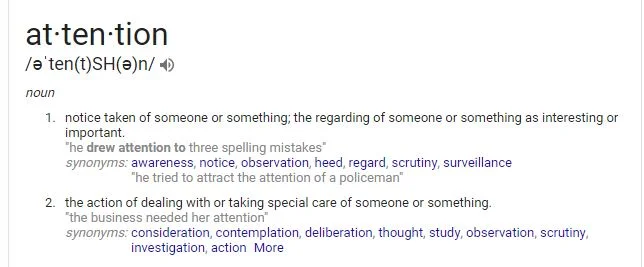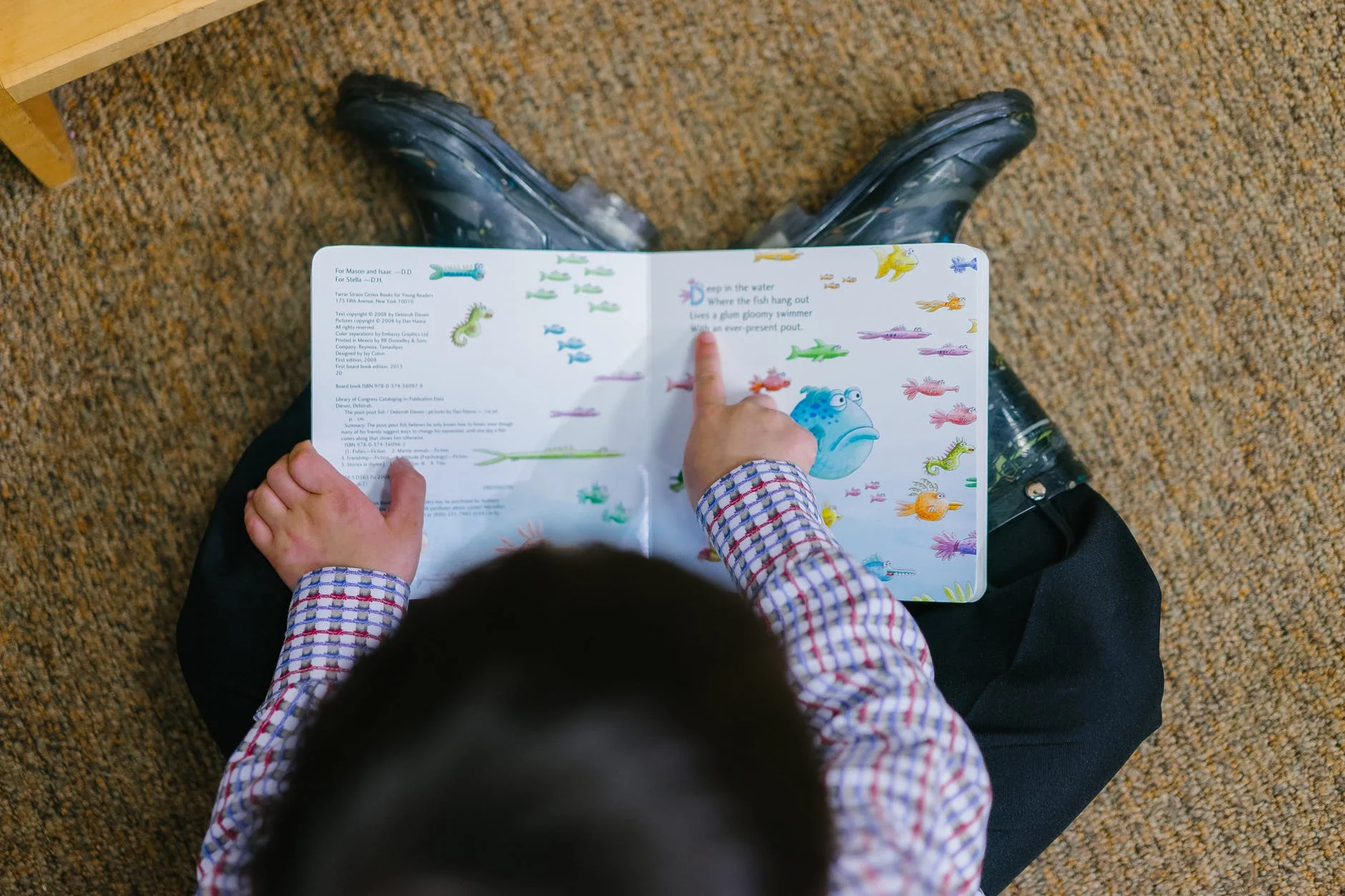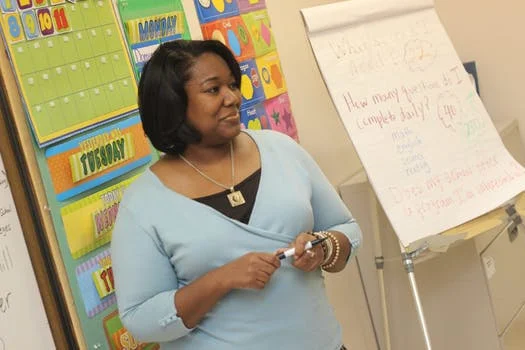What Impacts Young Children Attention and Engagement In Early Childhood Education Settings?
Introduction
The brain does not have an endless capacity for attention and engagement. As a pre-k teacher, I have always been fascinated about children’s attention. Particularly, I have been interested in how to help children boost and sustain their attention and engagement in the classroom. One of the things that I have noticed is that children’s attention capacity varies based on what activity areas they may be in. For instance, a child who might be able to sit and focus while building with blocks for an hour may not be able to sit for more than a minute listening to a teacher read a story and vice versa. I found a study that investigated children sustained attention (described as engagement) in different parts of a typical preschool day including child choice time activities, adult choice time activities, and adult presentation time. Jumping off from this point, I found other research articles that looked into different factors that influenced young children’s attention and engagement in a preschool setting. In the following paragraphs, I will briefly summarize and compare and contrast the ideas presented in the research.
Literature Review
Free choice play where children can choose any activity in a classroom, limited choice time where an adult puts out a few activities the children can choose from, and adult orientated activities where the adult is directing the activity and there is no choice given to the children. [1] The first study reviewed investigated preschool aged children’s engagement with different toys when the children were given free, limited, or no choice in which toy they were able to engage with. The study had 63 children participate in 17 different classrooms and all the children were considered to be typically developing based on The Ages and Stages Questionnaire assessment tool. The researchers used a stop watch to see how long children engaged with a toy in the three different circumstances with toy engagement being defined as the child using the toy in the intended manner, looking at the toy, or talking about the toy. The research found that children who were given free choice of what toy to play with engaged with the toy on average for six minutes, children who got to choose between two toy options engaged with the toy for an average of a little over three minutes, and children who were presented with a toy to engage in by an adult engaged with the toy on average for two and a half minutes. (DiCarlo, C. F., Baumgartner, J. J., Ota, C., & Geary, K. (2016).
The amount of choice offered is not the only potential factor related to engagement. Social factors like the presence of peers and teachers when engaged in activity and or the amount of talked with peers and teachers during an activity can also effect preschool children’s engagement levels. In the second study reviewed, the focus was on children during free choice time with the study in the previous paragraph found to be the time when children had the longest engagement. In the study, 12 children were observed in a single preschool classroom during free choice play. It is important to note that at this school free choice play comprised the clear majority of the school schedule, so it was a time children were familiar with. Researchers coding both children’s engagement in the activity and the nature of the social interactions during those engagements in a variety of ways. The engagement codes included the amount of time the children were engaged in activity, moved purposely to a new area, followed a peer, wandered, and other time not engaged. The talk codes included how often a child talked to themselves/peer/teacher on the topic of the activity and how often they talked to themselves/peer/teacher on another topic not related to the activity at hand. The study found that teacher talk during the activity was more likely to result in disengagement and a child leaving an activity than staying engaged at an activity. Conversely, peer presence and talk during an activity was found to sustain longer engagement from the children; this was especially true when the formation of a larger group of peers occurred during an activity. Finally, it was found that self talk was not as frequent as teacher talk or peer talk during activities, but it was also associated with longer periods of engagement for students (Test, J. E., & Cornelius-White, J. H. D. 2013).
Another part of a typical preschool day that requires some level of attention and engagement in preschool settings is “circle time.” [2] As the name would suggest, during circle time children usually sit in a circle shape where a teacher leads them in going over the calendar, the weather, singing songs, reading stories, and other group orientated learning activities. Researchers looked to study whether children sitting on “wiggle cushions” circle shaped pillow like chairs would improve children’s attention during circle time. In the study two preschool classrooms used the wiggle cushions instead of just sitting on a rug like usual while two other classrooms used wiggle cushions to sit on during circle time. Children in the classroom that used the wiggle cushions were given the choice if they wanted to use them to sit or not. The circle times were videotaped and researchers used the Child Behavior Rating Scale (CBRS) to assess the child’s attention, affect, involvement-distractibility, and persistence. Using the CBRS scale after video taping circle times for four weeks, researchers found that students who sat on the Wiggle Cushions were more likely to actively participate in circle time as demonstrated by singing song and answering questions and were less likely to be engaged in off task interactions and side conversations with their peers (Seifert, A. M., & Metz, A. E. 2017).
For children who do struggle with being able to focus attention on task during large group activities like circle time, another often used approach is to somehow incorporate exercise and physical movement during or preceding the large group time. A study conducted inquired whether having preschool ages children engage in outdoor exercise prior to a large group indoor activity increased engagement. In the study, a small sample of two students were used in a preschool classroom of 15 students. The students were selected because both were reported by teachers as having struggles with attention during large group time activities. Researchers observed the two students to get a baseline measure of their typical behavior during group time. The researchers measured how often the child was on task and or out of their seat during group times. In the experimental exercise condition, children were shown pictures of two potential exercises to engage in before circle time and wore Fitbit devices to measure the amount of physical activity they were engaged in. In this case, for one child there was increases in on task behavior during group learning after exercise while the other child did not show any increases in on task behavior during group times. (Chazin, K. T., Ledford, J. R., Barton, E. E., & Osborne, K. C. 2018).
Analysis
All these studies vary widely in their methods and the types of activities the children are participating in when their engagement is being measured. What is useful to note, is the variety of ways that the student’s engagement was measured. In one instance, a stop watch was used to measure how long children interacted with a toy (DiCarlo, C. F. Et. Al. 2016) and time was also used as a measure of engagement in the study that looked at peer and teacher interactions (Test, J. E., & Cornelius-White, J. H. D. 2013). Another frequent measure used was if the child was “on task (Seifert, A. M., & Metz, A. E. 2017) (Chazin, K. T., Et. Al. 2018). The metrics we use to decide when a child is engaged in activity say a lot of what we value in early education. When we say “on task”, we are in essence saying that the task we are asking the child to engage in is one that has value to and or for the child. This in many cases might be an assumption we are making as educators. For instance, we may be asking children to engage and be “on task” on tasks that have no educational value or other value for that child. If that is the case, are we measuring children’s ability to be engaged or children’s ability and willingness to comply with adult directives?
Similarly, when we measure engagement using time we again are placing value on the metric in ways that may or may not be developmentally appropriate. By saying that a child interacting with an activity longer is a measure of engagement, we may be measuring a children’s general development and not their engagement with an activity. For instance, if a child has the developmental ability to engage in activity for about 5 minutes, when we use time as measure of engagement we are putting a cap on high how the child can achieve on that level of engagement based on their overarching development. This might lead us astray when we are attempting to measure the engagement value of any particular intervention.
References
Chazin, K. T., Ledford, J. R., Barton, E. E., & Osborne, K. C. (2018). The Effects of Antecedent Exercise on Engagement during Large Group Activities for Young Children. Remedial and Special Education, 39(3), 158–170. Retrieved from http://ezproxyles.flo.org/login?url=http://search.ebscohost.com/login.aspx?direct=true&db=eric&AN=EJ1179724&site=ehost-live&scope=site
DiCarlo, C. F., Baumgartner, J. J., Ota, C., & Geary, K. (2016). Child Sustained Attention in Preschool-Age Children. Journal of Research in Childhood Education, 30(2), 143-152. doi: 10.1080/02568543.2016.1143416
Seifert, A. M., & Metz, A. E. (2017). The Effects of Inflated Seating Cushions on Engagement in Preschool Circle Time. Early Childhood Education Journal, 45(3), 411–418. Retrieved from http://ezproxyles.flo.org/login?url=http://search.ebscohost.com/login.aspx?direct=true&db=eric&AN=EJ1134939&site=ehost-live&scope=site
Test, J. E., & Cornelius-White, J. H. D. (2013). Relationships between the Timing of Social Interactions and Preschoolers’ Engagement in Preschool Classrooms. Journal of Early Childhood Research, 11(2), 165–183. Retrieved from http://ezproxyles.flo.org/login?url=http://search.ebscohost.com/login.aspx?direct=true&db=eric&AN=EJ1009057&site=ehost-live&scope=site
[1] Schools will vary what they call these times of day.
[2] Circle time is often also called “morning meeting, afternoon meeting, story time, and group time





